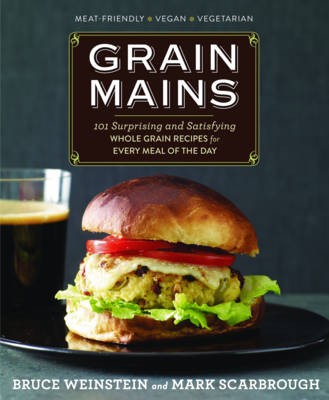Grains…taken as a whole
September 25, 2012 by SusieRemember how it used to be with whole grains? You’d go to a natural-foods store asking for farro or spelt, and the assistant manager would say, “how do you spell that again?” And then, if you were lucky, you’d score some of last year’s wheatberries, which you would forget to label. and then they’d sit on the shelf until the miller moth larvae they secretly harbored hatched out and you had to throw the whole thing in the compost. Or you’d start cooking and forget you got amaranth, not quinoa, and instead of lifting the lid on a mound of something looking a bit like fluffy couscous, you’d find a gloppy brown mush with no discernible function.
 Things have changed a lot since
then (although, OK, I still get amaranth confused with quinoa
sometimes). You can find lots of different whole grains in
the bulk bins of Whole Foods and even packaged whole grains at more
conventional supermarkets. And with every year there’s more
and more helpful, accessible whole-grain cookbooks.
Things have changed a lot since
then (although, OK, I still get amaranth confused with quinoa
sometimes). You can find lots of different whole grains in
the bulk bins of Whole Foods and even packaged whole grains at more
conventional supermarkets. And with every year there’s more
and more helpful, accessible whole-grain cookbooks.
 I recently tried a number of
recipes from Grain Mains, by veteran cookbook duo Mark
Scarbrough and Bruce Weinstein. Some recipes featured whole
grains pretending to be something else, like hamburgers
or flour (ground whole grains show up in lots of muffins and
pancakes, for example). Some were little more than
salads–grains plus vegetables and or fruits. But there were
none of the endless brown landscapes of yesteryear, eaten only by
the most open-minded. When the fringe becomes the mainstream,
that’s usually a good thing in cookbooks.
I recently tried a number of
recipes from Grain Mains, by veteran cookbook duo Mark
Scarbrough and Bruce Weinstein. Some recipes featured whole
grains pretending to be something else, like hamburgers
or flour (ground whole grains show up in lots of muffins and
pancakes, for example). Some were little more than
salads–grains plus vegetables and or fruits. But there were
none of the endless brown landscapes of yesteryear, eaten only by
the most open-minded. When the fringe becomes the mainstream,
that’s usually a good thing in cookbooks.
Categories
- All Posts (7076)
- Antipasto (2206)
- Author Articles (250)
- Book News (944)
- Cookbook Giveaways (996)
- Cookbook Lovers (262)
- Cooking Tips (116)
- Culinary News (299)
- Food Biz People (558)
- Food Online (800)
- Holidays & Celebrations (277)
- New Cookbooks (154)
- Recipes (1520)
- Shelf Life With Susie (231)
- What's New on EYB (134)
Archives
Latest Comments
- Kisa on French at Heart – Cookbook Giveaway
- smcculle on French at Heart – Cookbook Giveaway
- SULouisville on Balli Balli – Cookbook Giveaway and Quick Bites
- SULouisville on 20 Amici – 40 Ricette Cookbook Giveaway
- SULouisville on French at Heart – Cookbook Giveaway
- SULouisville on French at Heart – Cookbook Giveaway
- JimCampbell on Food news antipasto
- Indio32 on Four outstanding independently published cookbooks worth your attention
- nvernon on Four outstanding independently published cookbooks worth your attention
- fayegibson on Four outstanding independently published cookbooks worth your attention